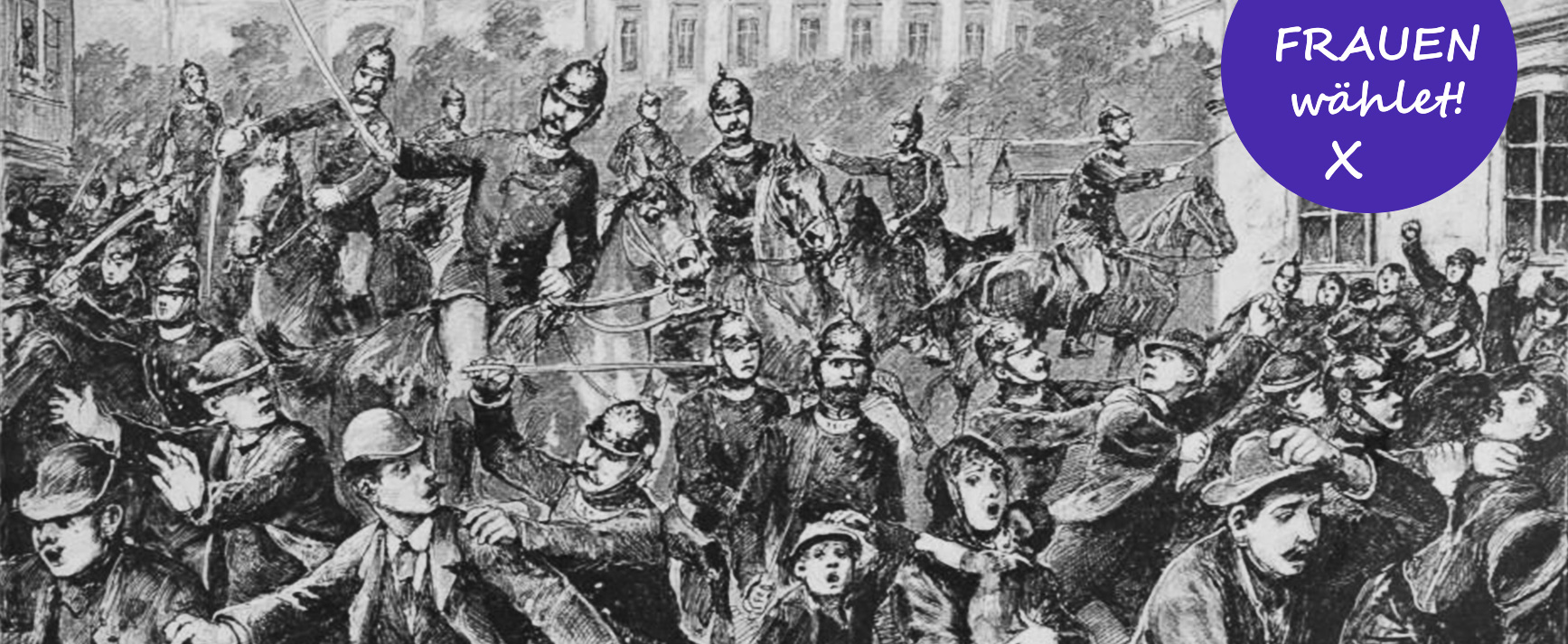
Women demand the right to vote – 1848 to 1918
The revolution of 1848 led to the first election of a Constituent Assembly in the Habsburg Monarchy. Women and non-privileged men were excluded. The imperial family had ruled supreme until 1848 without any participation by the people. The revolutionaries – middle and working classes and students – demanded a constitution and an elected parliament for the first time.
In 1849 the constitutional committee of Parliament debated the conditions for obtaining the right to vote, which included payment of tax. These debates rejected political rights for women.
When the revolution ended, the right to vote remained linked to education and a specific tax revenue, but not now to gender. Women who owned property or land or had professional or business earnings could vote in many municipalities under the provisional electoral regulations of 1849, and from 1861 for the diets of the crownlands as well. But female voters were often not allowed to go to the polls themselves, their votes had to be cast by a male representative – the husband in the case of married women. With the exception of a small number of large landowners, women were not eligible to vote for the most important political institution, the parliament.
With the emergence of a women’s suffrage movement towards the end of the 19th century, achievement of the right to vote without any restrictions was initially the aim for just a few groups within the historic women’s movement. The idea of an individual right to vote regardless of property and education was slow to gain ground. As time passed, more and more men were given the vote and gender as a condition of political rights became even more important.
Chronology of voting rights
- 1848 Parliamentary elections (men only)
- 1849 Municipal voting rights for property owners (including women) and the educated
- 1861 Diets of the crownlands voting rights for property owners (including women) and the educated
- 1873 Parliamentary elections (including women owning large property)
- 1884 to 1904 Withdrawal of municipal and diets of the crownlands voting rights for female taxpayers in several crownlands
- 1896 Universal unequal men’s right to vote in parliamentary elections
- 1907 Adoption of universal, equal parliamentary voting rights for men
- 1918 Adoption of universal, equal, direct, secret voting rights for all citizens without gender distinction
- 1919 Women exercise the right to vote and to stand for election on equal terms for the first time at the election for the National Constituent Assembly
